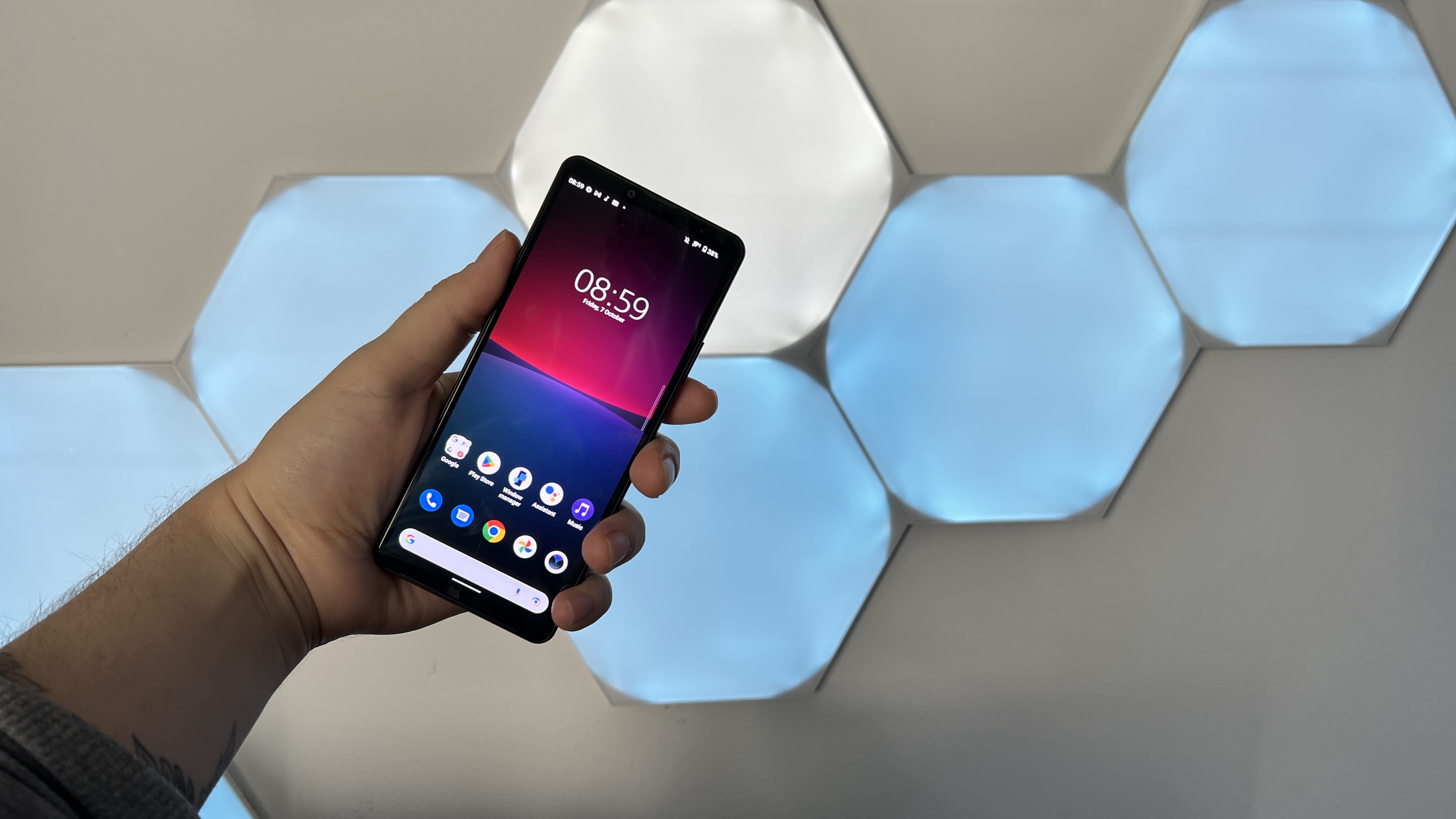Laptop Mag Verdict
Sony’s Xperia 10 IV is a decent budget phone in a sea of great options. The nice 21:9 display, trademark Xperia aesthetic, and long battery life will impress some, but the middling camera quality and lagging performance makes this hard to recommend when compared to its competition.
Pros
- +
Sleek, durable design
- +
Vivid display
- +
Official IP68 rating
- +
Strong battery life
- +
Versatile triple camera setup…
Cons
- -
…with middling picture quality
- -
Below-average performance
- -
Only 60Hz refresh rate
- -
Expensive for what you get at £429
Why you can trust Laptop Mag
Budget phones require compromise, but it must be compromised in the right places, so as to not ruin the phone. The Sony Xperia 10 IV is a textbook example of what happens when you choose to make some of the wrong compromises.
On the face of it, this has the makings of a good phone. But in a world where the Nothing phone (1), the Google Pixel 6a, and the 2022 iPhone SE exist, Sony has made one too many cutbacks to the Xperia formula that hurts the 10 IV against its competition.
I know the score and those first two paragraphs may have given away how I feel about this phone, but allow me to explain in a little more detail and if Sony is reading this (hi, by the way), provide some feedback about what can be done next time to be in with a better shot of budget supremacy.
Sony Xperia 10 IV price and configurations
The Sony Xperia 10 IV is available in four colors (black, white, mint, and lavendar), but with one configuration only: 6GB RAM and 128GB of UFS 3.1 storage for £429. There isn’t any official U.S. availability, but you can pick one up on Amazon for $380 right now.
This price puts it square in the sights of the iPhone SE and Google Pixel 6a, alongside the other competitors I mentioned above.
Sony Xperia 10 IV design

Sony’s Xperia phones have one particular aesthetic, and while the Xperia 10 IV sports a budget-friendly combination of glass and plastic, the refined, utilitarian persona makes a sleek impression.
The flat sides are coated in a soft-touch plastic that feels nice in the hand, the SIM tray is easily removed without the need of a pin, and the two buttons on the right edge (RIP dedicated camera shutter button) are well placed for your thumb to fall gracefully to. As for ports, you have two: a USB-C and a warmly welcomed 3.5mm headphone jack.
Sign up to receive The Snapshot, a free special dispatch from Laptop Mag, in your inbox.
This long slab persona is most present when you break down the dimensions: 6.0 x 2.6 x 0.3 inches with a weight of 5.7 ounces. This is taller, but skinnier and lighter than the Pixel 6a (5.9 x 2.8 x 0.3 inches, 6.3 ounces), while the iPhone SE is far dinkier in all measurements (5.2 x 2.5 x 0.3 inches, 5.0 ounces).
Unlike the Xperia 1 IV, this longer form with half an inch cut off the top is easier to fit into smaller pockets, which is a welcome change of pace for me and my skinny jeans, and adds up to a pretty solid, refined design all round. Plus, there is IP68 water resistance — a rarity in phones at this price.
Sony Xperia 10 IV display
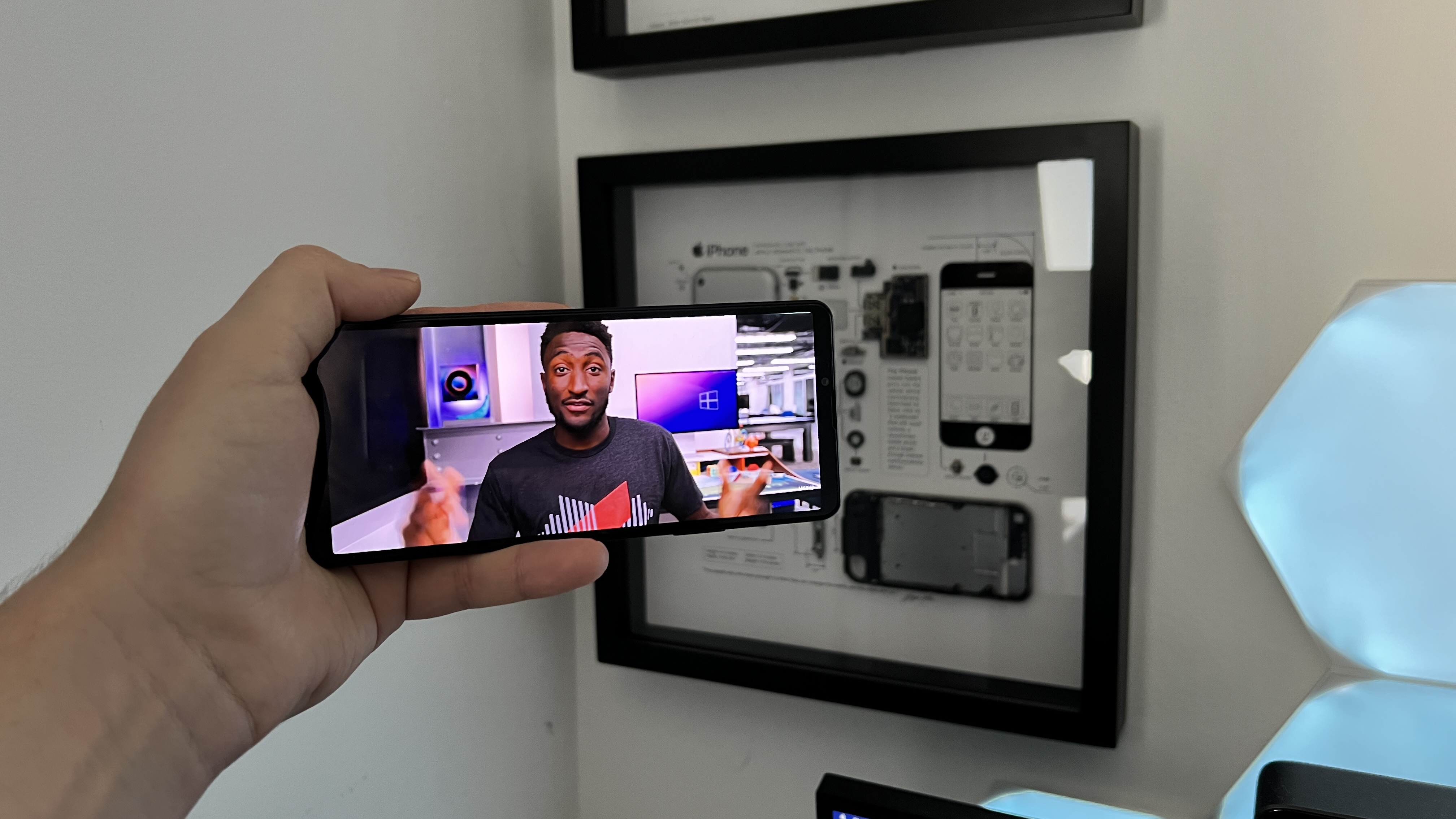
The display has always been a strong point of Sony’s smartphones, and the Xperia 10 IV is no different. In here, you’ll find a 6-inch OLED panel with 2520 x 1080-pixel resolution, and the company’s patented TRILUMINOS display tech for improved color and contrast. If refresh rate is a huge deal for you, look elsewhere as this display is limited to just 60Hz.
With that bad news out the way, the end result of the OLED is vivid color and impressive depth. Taking advantage of the display’s OLED benefits, the trailer for Spider-Man: No Way Home emanated depth in darker scenes, making the brighter effects of Doctor Strange’s spells really glow.
Overall, the display makes for a nice viewing experience that lines up with other OLED displays you see at this price in terms of detail and popping color.
Sony Xperia 10 IV audio
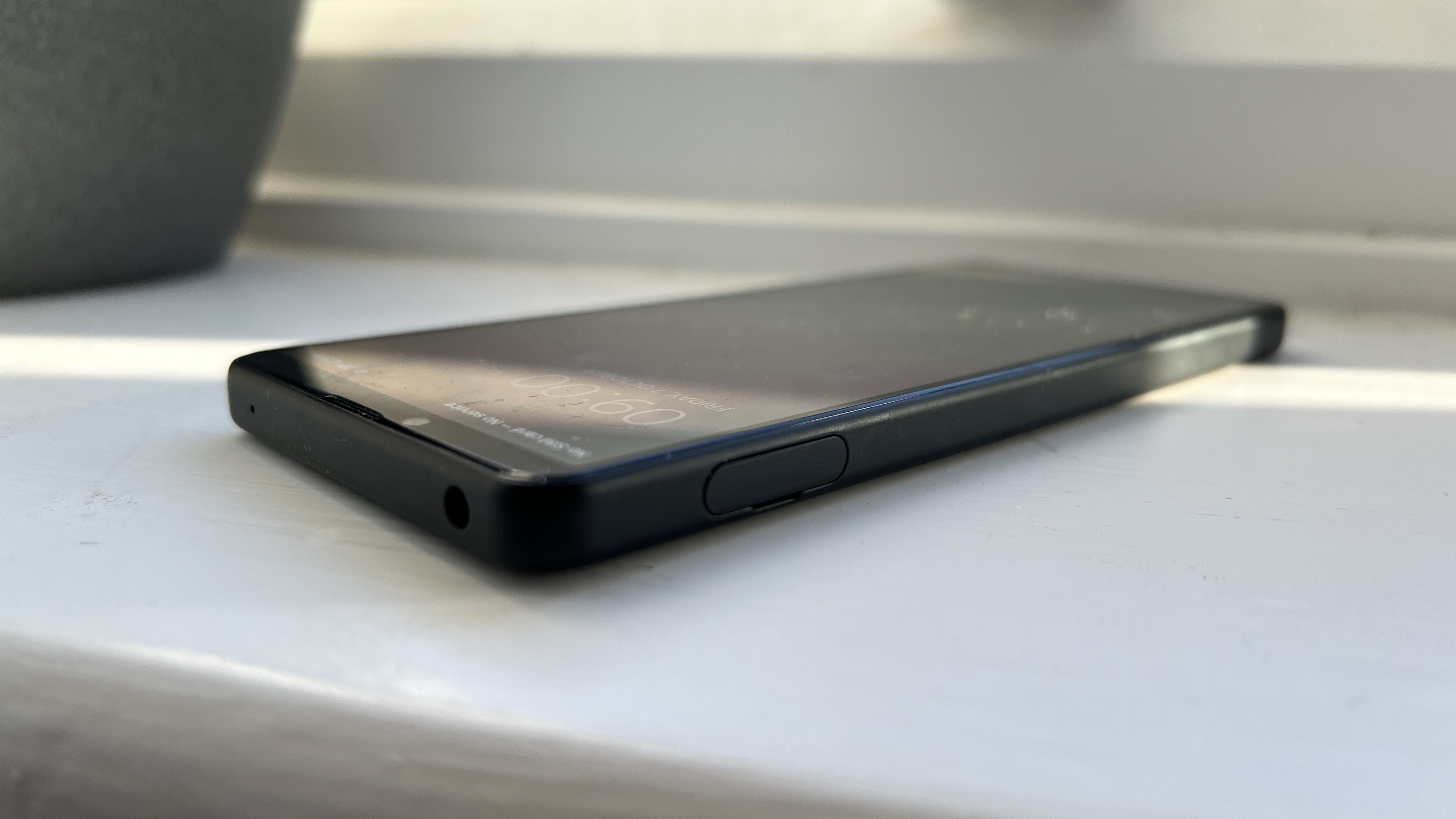
A strong screen needs strong sound for listening on the go with no earbuds, but Sony drops the ball here with stereo speakers that are heavily compromised.
They are small, tinny, and are vulnerable to distortion at volumes over 60%. When put under intense pressure with bass-heavy, intense metalcore such as Avoid’s EP “The Burner”, everything turns into a crunched-up mess.
Fortunately, there is a 3.5mm headphone jack on here, so you can capitalize on some LDAC hi-res audio codec, plus Bluetooth 5.1 grants the best wireless headphones access to the company’s fantastic 360 Reality Audio for true spatial sound.
Sony Xperia 10 IV performance
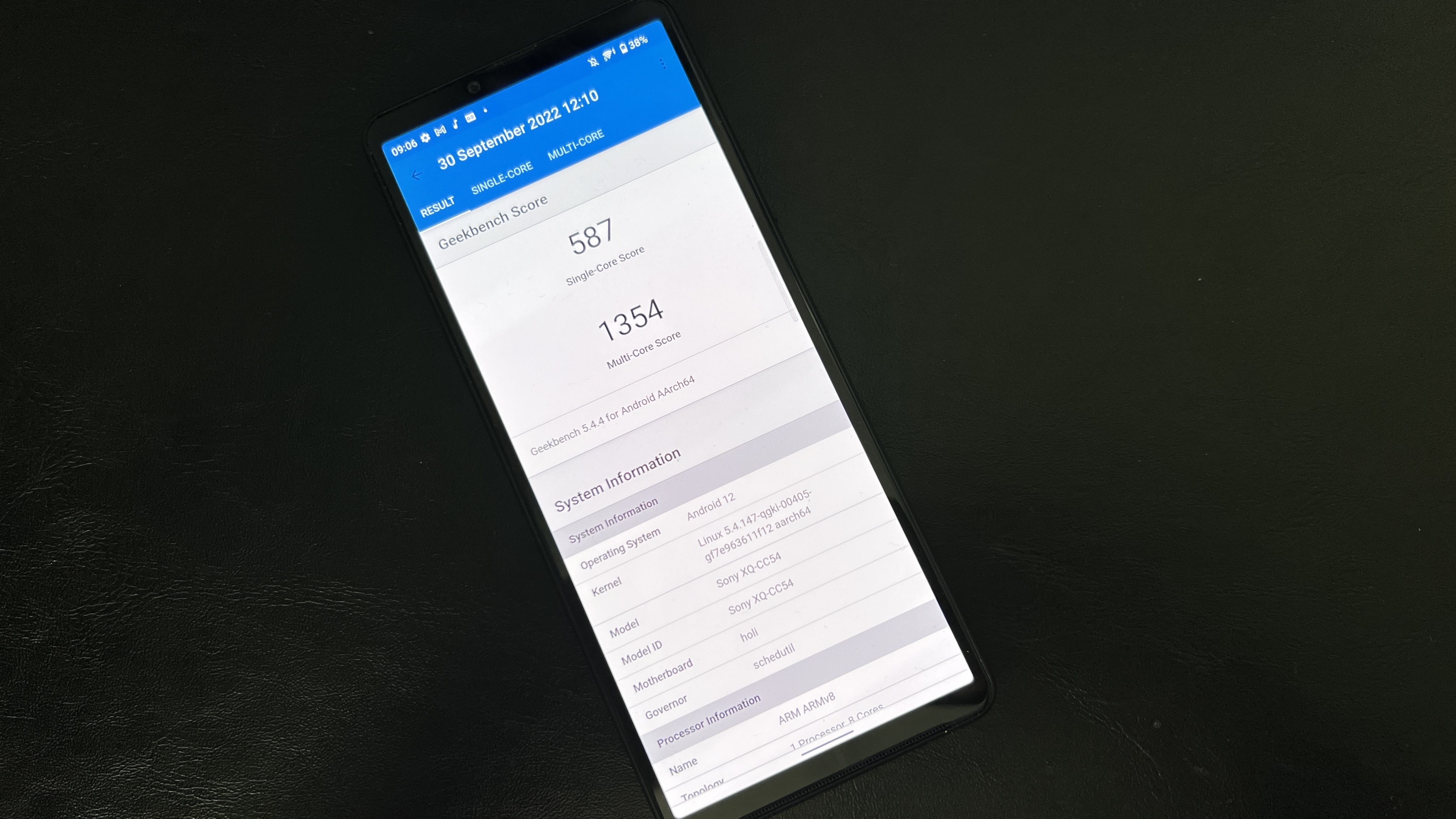
Let’s get into some speeds and feeds. The Sony Xperia 10 IV packs a Snapdragon 695 5G chipset, alongside 6GB RAM and 128GB of UFS 3.1 storage, which can be expanded by an additional 1TB via the microSD card slot.
Putting the phone through our usual paces, Sony’s budget slab hit a Geekbench 5 multi-core score of 1,354, whereas 3DMark Wild Life Unlimited testing sees the graphical prowess hit an overall score of just 1,205, with an average frame rate of a mere 7.2 fps.
Comparatively, the Pixel 6a storms ahead with a Geekbench score of 2,918 and a 3DMark frame rate of 42 fps, but the A15 Bionic in the iPhone SE just goes on a rampage with comparative scores of 4,482 and 50 fps, respectively.
I can appreciate that budget phones will rarely get the latest and greatest, but the jump to a Snapdragon 695 is too far of a step down when you take into account what the competition is running.
Ultimately, it unfortunately impacts day-to-day performance, as multitasking and anything more processor intensive than the average social media app is capable of slowing down the framerate to a crawl. If you have a basic smartphone workload, then this will be fine, but anything more and you’ll stress it out with the greatest of ease.
Sony Xperia 10 IV battery life and charging
With weaker internals and the beasty 5,000mAh battery that Sony has stuffed in the Xperia 10 IV, the longevity of this slab is mightily impressive.
Waking up at 8 a.m., I went through an entire day to 8 p.m. with the usual work/entertainment (emails, calls, social media, taking some quick pictures, Spotify by day, gaming and YouTube in my own time) with 25% of the battery still remaining.
And with fast charging support, you can charge to 80% in roughly 30 minutes, which helps stave off any battery life woes, though they will be few and far between thanks to the supreme stamina.
Sony Xperia 10 IV cameras
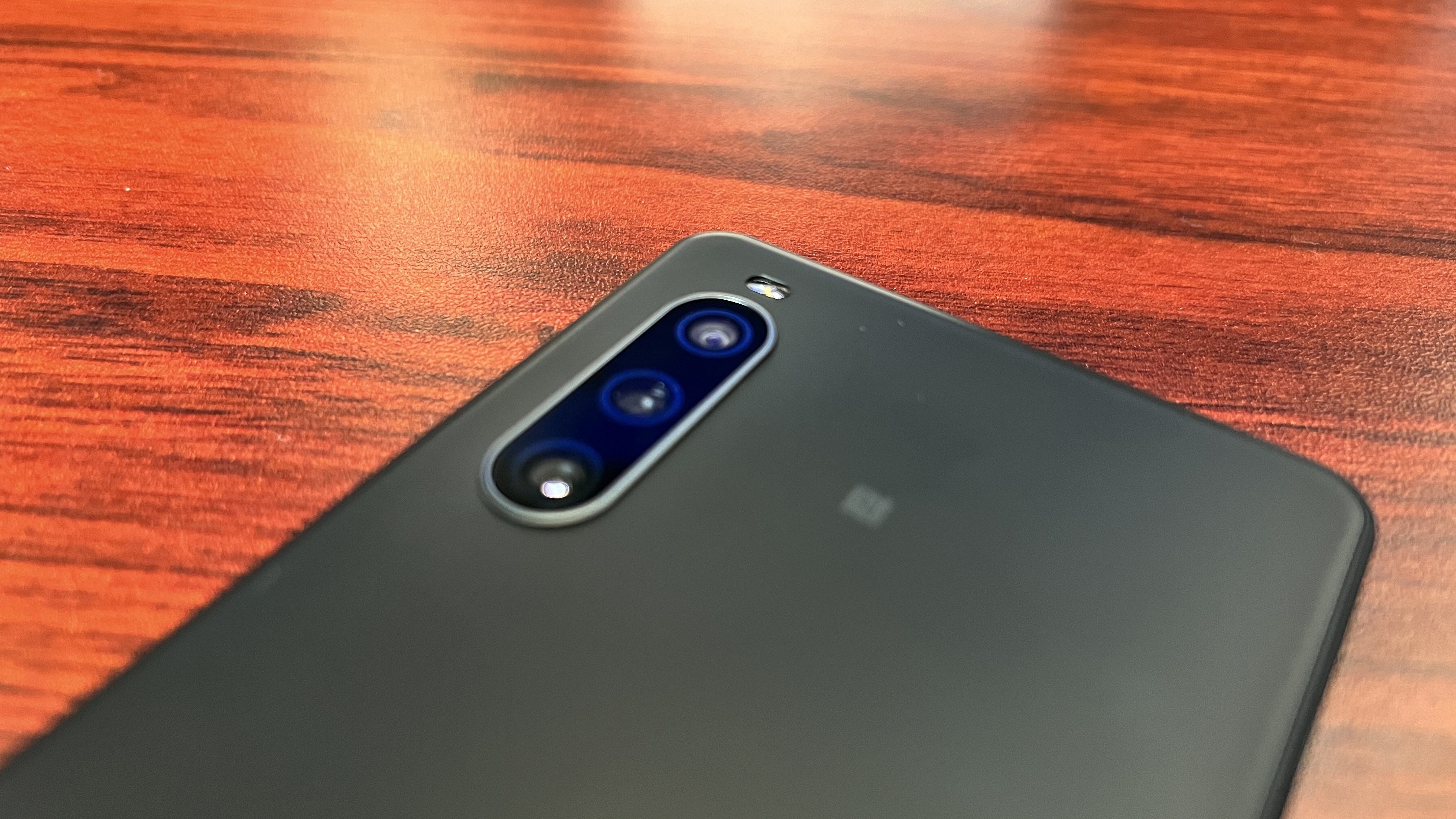
On the back, you have a triple camera setup consisting of a 12MP main sensor with f/1.8 aperture, an 8MP telephoto with f/2.2, and an 8MP ultrawide with f/2.2 aperture and a 120-degree lens.
Up front, there’s a 8MP selfie snapper with an f/2.0 aperture and to sum up this camera system in a few words, the Xperia 10 IV packs a versatile camera system that is good in most circumstances.
Details are crisp from the main rear camera and the color science offers a nice balanced picture, paired with an expressive contrast that makes each image really punchy in most lighting conditions.
The optical image stabilization (OIS) on the main lens does some heavy lifting for low-light photography, but this cannot overcome the slightly narrower pictures, which leads to noisy photos that lack detail.


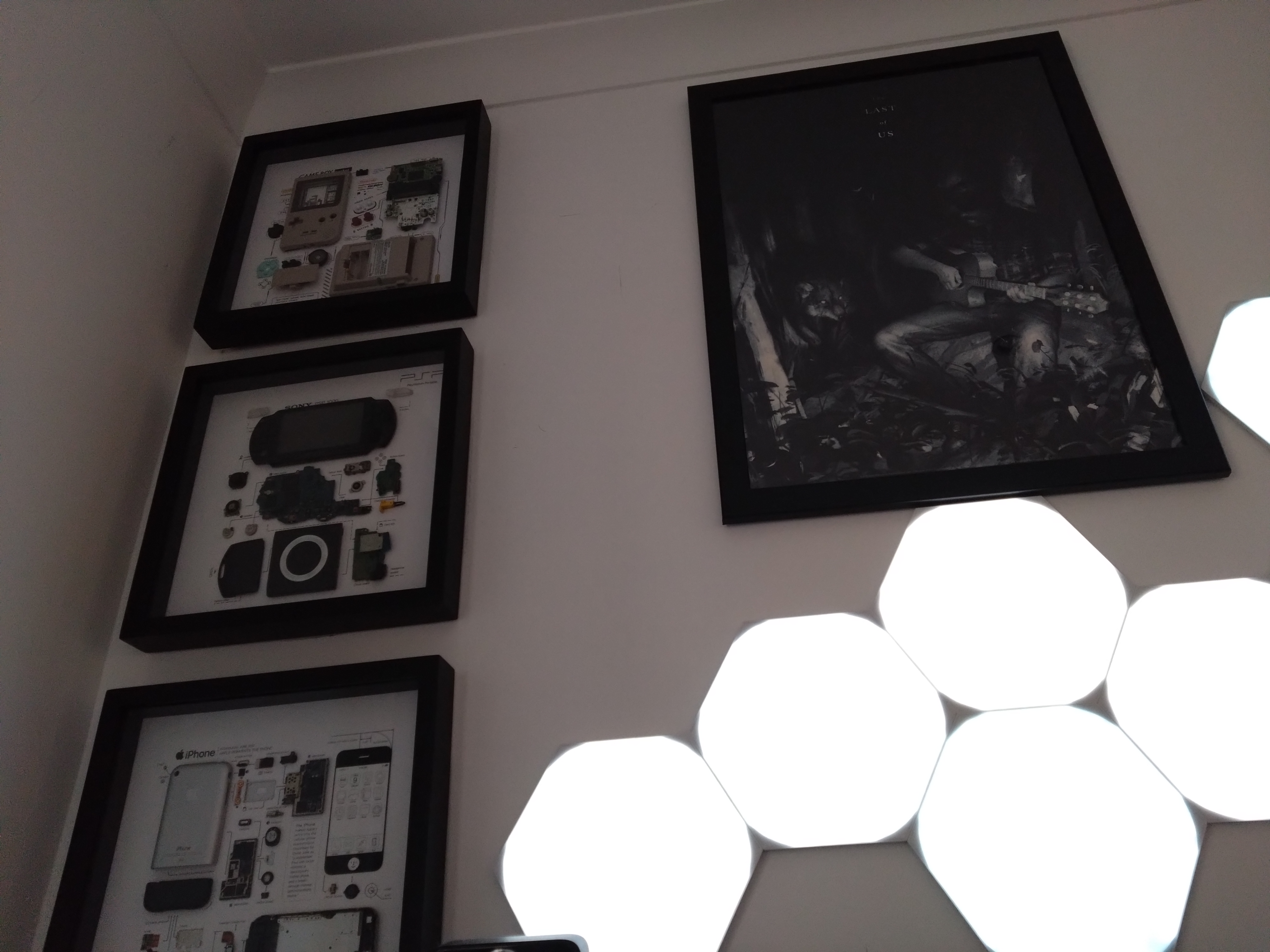



Ultra-wide shots are noticeably worse in image quality, as the edges of the picture can start to look a little mushy and light balance is a real struggle for it. Without the benefit of OIS, photos by night are very blurry. You can easily see the same from the telephoto too, which delivers similar mulchy results.
But my main problem with it surrounds all the cameras and the software specifically. You see, smartphone photography requires rapid focus for those fleeting moments. Tapping the shutter button takes you through a rigmarole of watching the phone focus and the image save that takes about 2-3 seconds.
Plus, when I have been impatient and put the phone in my pocket after immediately pressing the shutter button, I’m presented with a blurry mess. So, while others have snapped the pic and moved on, you’re still waiting — not ideal!
Fortunately, the front-facing camera creates detailed and colorful pictures with a thankful lack of AI beautification features. It produces honest pictures through and through, which is a rarity amongst many Android phones at this price point.
As for video, you can shoot up to 1080p 60 fps (no 4K), which produces the predictably dull results with slow auto focus that you’d expect. All in all, this is a disappointing camera system that does the job it’s required to do, but makes it hard for you.
Sony Xperia 10 IV software
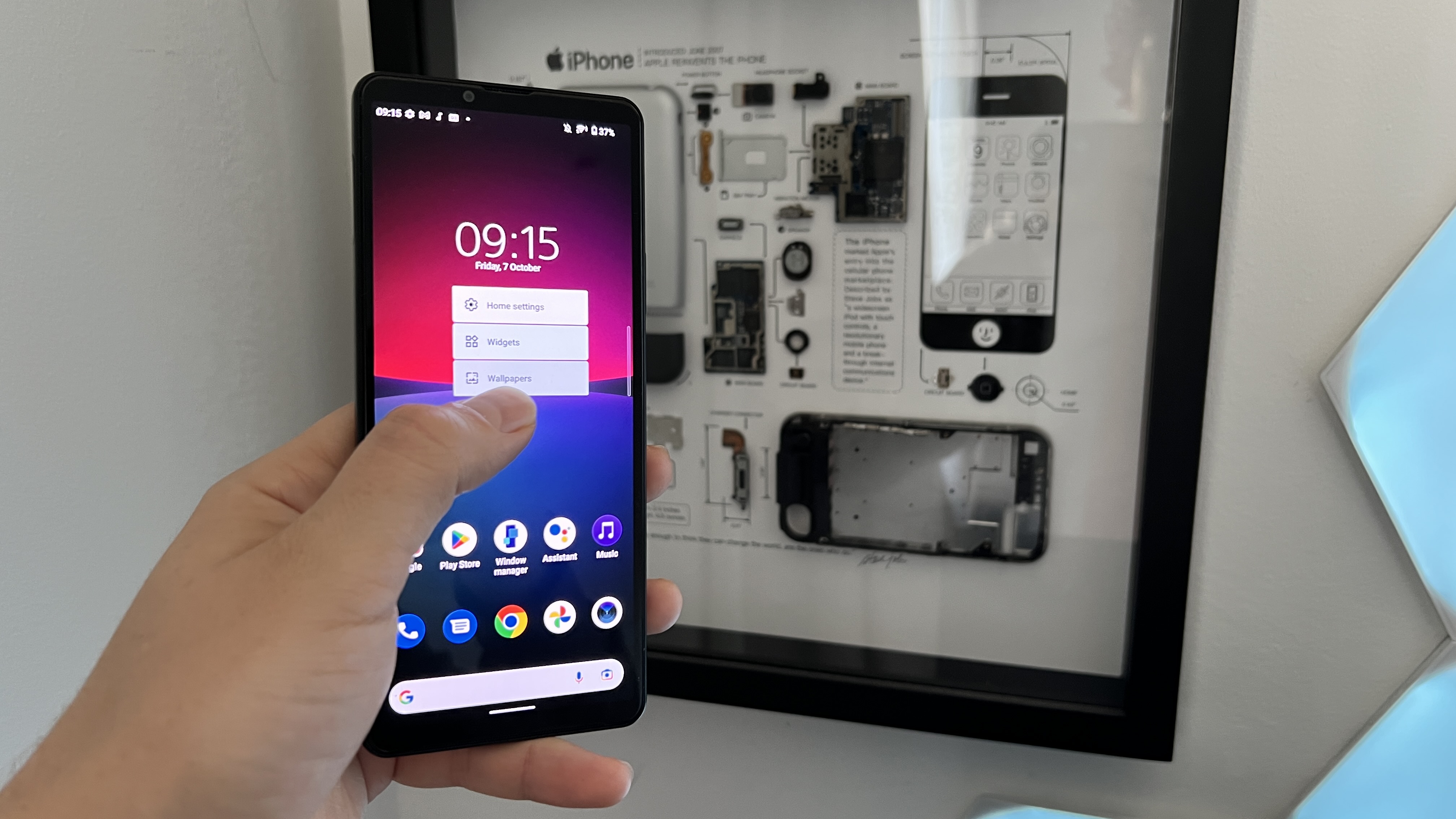
The Sony Xperia 10 IV runs Android 12 with zero bloatware except for a link to a free 3-month Tidal subscription for lossless audio streaming. The UI overlays added to help you overcome the taller display are useful, with easy access to split-screen multitasking and the Side Sense bar for additional control.
Sony does stumble with software update support, though. While there is no official policy on how long the company will support the Xperia 1 IV, history suggests you’ll get two years of updates. This is disappointing, as you’re able to get better software support from cheaper phones.
Bottom line
And that ends the story of the Sony Xperia 10 IV: the budget phone that shows promise, but falls at the important hurdles.
The Xperia formula remains largely intact, and I must give credit to the impressive battery life and official IP rating (something a lot of phones at this price lack). But with compromised internals, a dull camera system and a price tag that is comparatively expensive for what you get, it starts to fall behind the pack
Budget phones are about compromise, but Sony needs to check its priorities (camera, display) and keep an eye on what the competition is doing, as to not fall into this trap again.

Jason brought a decade of tech and gaming journalism experience to his role as a writer at Laptop Mag, and he is now the Managing Editor of Computing at Tom's Guide. He takes a particular interest in writing articles and creating videos about laptops, headphones and games. He has previously written for Kotaku, Stuff and BBC Science Focus. In his spare time, you'll find Jason looking for good dogs to pet or thinking about eating pizza if he isn't already.
